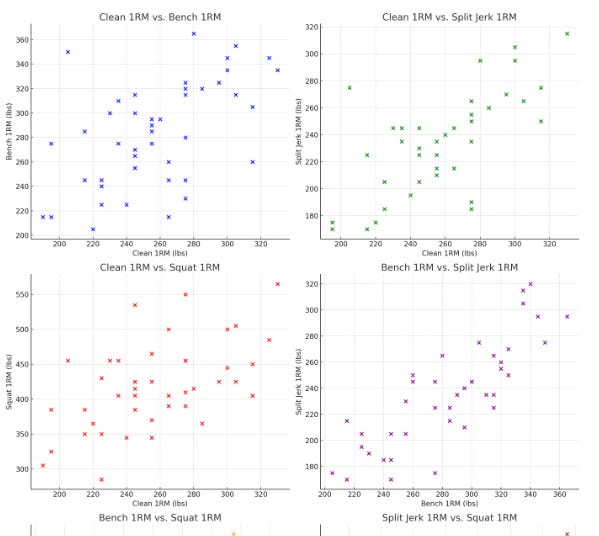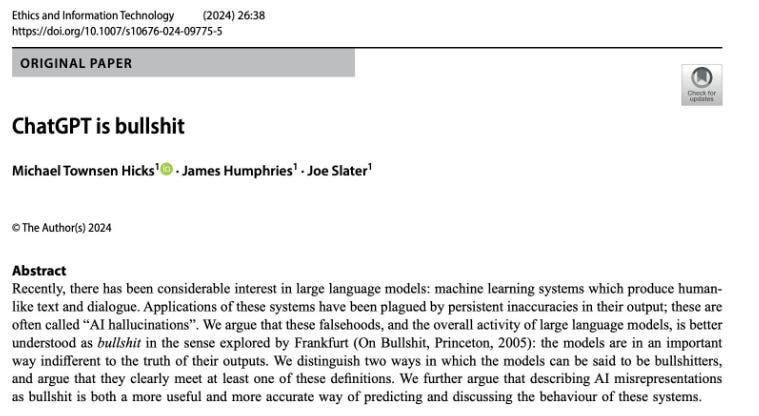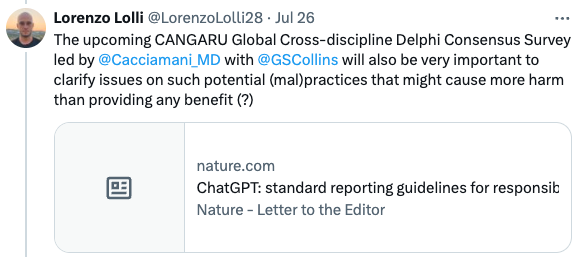Back to School: The Use of AI in Higher Education and Research
A few years ago, some idle conversation could be heard around the university hallways about AI and ChatGPT. Although I generally like to think of myself as fairly innovative, I can sometimes be a laggard. For example, I did not join Twitter @Joe_Eisenmann until October 2016 - about 10 years after it was founded. And before that, the same was true for Facebook.
After a faculty seminar on ChatGPT in Spring 2023, I mulled over getting on the open AI platform to see what it was all about. I dragged my feet through the summer and then in preparation for Fall semester 2023 (and to see what my students were potentially using), I started to explore chatGPT.
This initial exploration was simply using it to write a blog, since most of the talk at the university was about students using it to write assignments. My “proof-of-concept” blog on long-term athletic development can be found here, where I also acknowledged that “the use of generative AI in academia will certainly go beyond student essays and assignments and will be used by academics and researchers”.
Sure enough … It’s happening - lit reviews, scientific manuscripts, and I imagine even research grant applications - written using ChatGPT. And here are a few examples of the malpractice of using ChatGPT in peer-reviewed journals as pointed out by a colleague on X.
Summer 2024: Explorations of an Old Guy
Well, it’s been another year and I’ll admit that I only inched myself forward with learning more about ChatGPT - even though I knew students were using it and there continued to be hallway conversations amongst faculty.
But last week, I become mildly obsessed (and fascinated) with some of the things chatGPT (and related apps) can do regarding research.
Here is a snippet of a few use cases:
1. Correlations Amongst 1 RM Clean, Squat, Bench Press, and Split Jerk
I just opened up a Google Sheet containing some performance data and pulled 1RM values for Clean, Squat, Bench Press, and Split Jerk of a college football team. Using Data Analyst as a function in ChatGPT, I (it) ran a statistical analysis, created data visualizations, and there is probably have enough to write the results section and a good start to a manuscript …. Un-freakin-real!
Here is a bit of the process:
1 Dropped in the data - just copy and pasted from Google Sheet
2 It said: To analyze this data, we should start by cleaning and structuring it. Let's organize the data into a tabular format, handle any missing values, and compute summary statistics. Here is the cleaned and structured data: (and provided me the spreadsheet of the data)
3 Told me the Next Steps:
Handle missing values.
Calculate summary statistics like mean, median, etc.
Visualize the data (e.g., histograms, scatter plots).
4 Calculated the summary stats and created histogram
4b - Described the histograms - e.g. Bench 1RM: The distribution is slightly right-skewed, centered around 290 lbs, with most values between 255 and 322.5 lbs.
5 - Suggested: let's create scatter plots to explore the relationships between the different lifts
…and then created them …
5b - Provided a conclusion based on the data: These visualizations suggest that increases in one lift are generally associated with increases in the other lifts.
And also suggested: To quantify these relationships, we could compute the correlation coefficients.
6 - Gave the Python code for correlations
6b - Calculated the correlations with interpretation of the direction and magnitude
7 - I then needed to know what the literature says about the relationship between these lifts so I used Consensus, an app within ChatGPT where you “Ask the research, chat directly with the world's scientific literature. Search references, get simple explanations, write articles backed by academic papers”.
It provide me with a quick summary of the literature:
This was a first pass for me and I could clearly tighten up a few things but you can see how this provides an initial (and efficient) start to the research process. (Note: I am not saying it’s right or wrong … as the ethics and best practice of using ChatGPT are seriously being discussed as we speak.)
2. From Conference Abstract to Manuscript
Using an abstract that I presented at a sports medicine conference, I prompted ChatGPT to “write a peer-reviewed manuscript from this abstract and include references: [abstract pasted here]
Within minutes, I had a draft of a manuscript. Although each section was a bit brief, it was a start - and quite accurate.
NEXT STEPS: SEEKING ADDITIONAL RESOURCES
Of course, this was just the beginning … as I knew it could do more. That evening I hopped on YouTube and watched a few videos such as: How to ethically write a lit review, Using ChatGPT to generate a research dissertation and thesis, etc.
There is quite a bit to be learned on YouTube from other researchers using ChatGPT.
Being an academic, I value the peer-review process (even with all its warts) and thus will be seeking academic papers and forums that share the thoughts, pros and cons, and uses of AI in higher education and research.
In the midst of my obsession with this topic, I posted on X ‘What % of researchers are using ChatGPT/AI for research - idea generation/lit reviews/writing Abstract, Intro, etc./statistics, etc.?”. It did not receive much, if any, attention - except for one individual who responded - “Admittedly, why one would ever need something 𝙚𝙡𝙨𝙚 to 𝙩𝙝𝙞𝙣𝙠 𝙛𝙤𝙧 him-/herself 𝙞𝙛 𝙪𝙣𝙖𝙗𝙡𝙚 to do so by embracing a practice that risks of being unnecessarily “unprofessional, arguably unethical, and certainly unacceptable”?
The person also shared a few resources:
…. and left the thread with this announcement
So, stay tuned … the future is here! And leave a comment. I have more questions than answers. Actually, I don’t think I have any answers. I’m just trying to figure it out, and would love to hear your thoughts, comments, experiences, etc.
IronMan Performance is a reader-supported publication. To receive new posts and support my work, consider becoming a free or paid subscriber.














